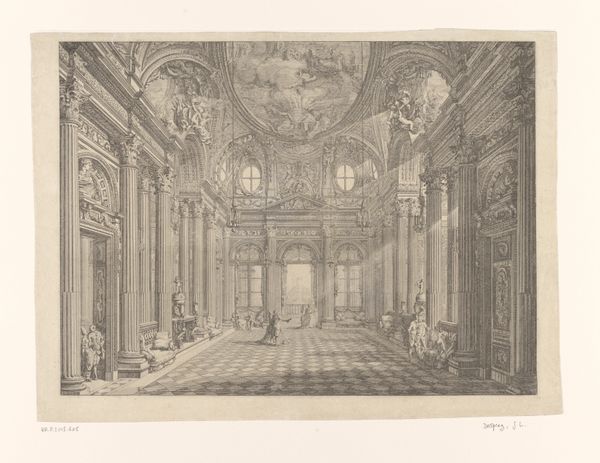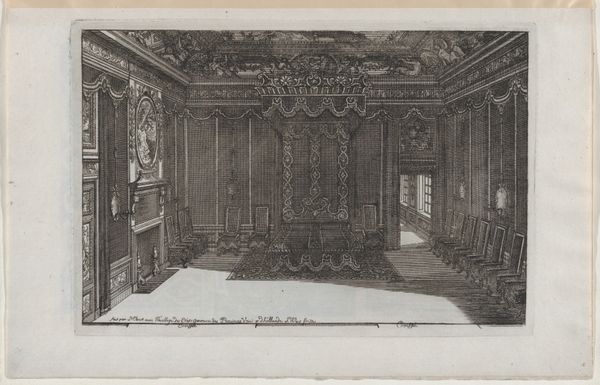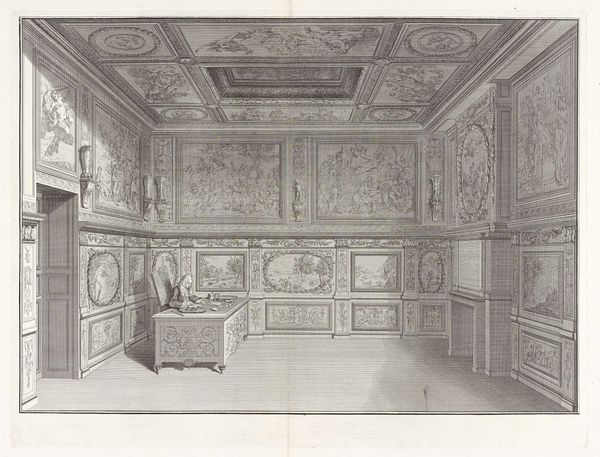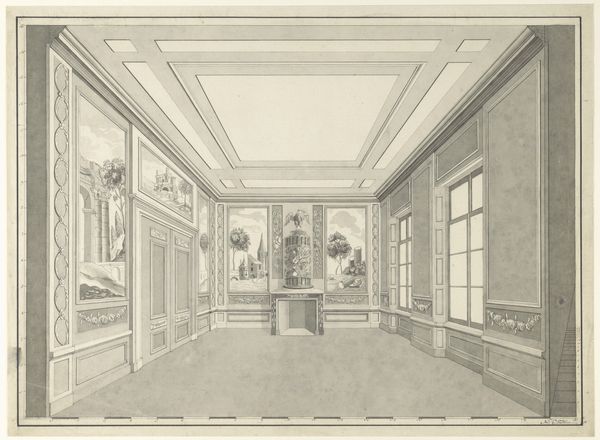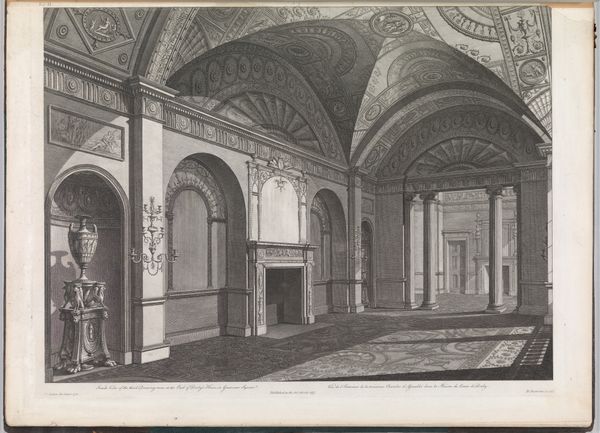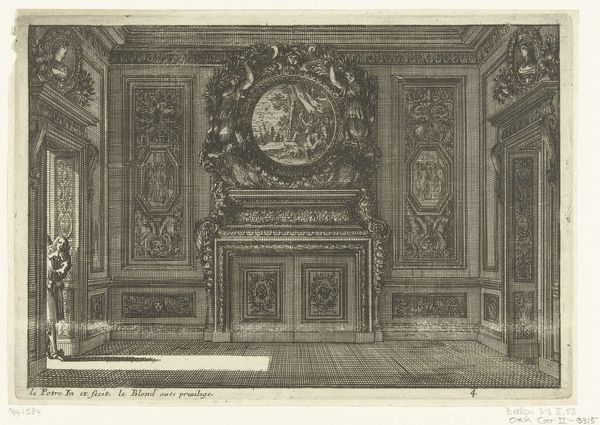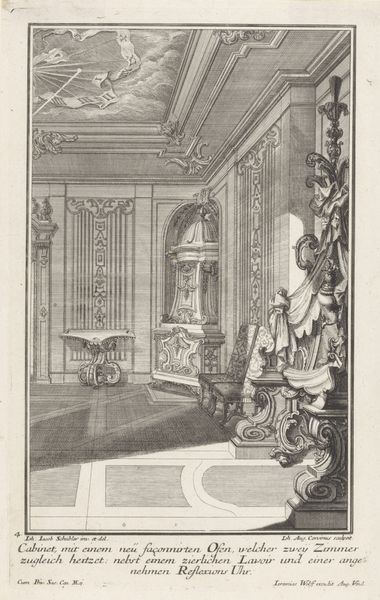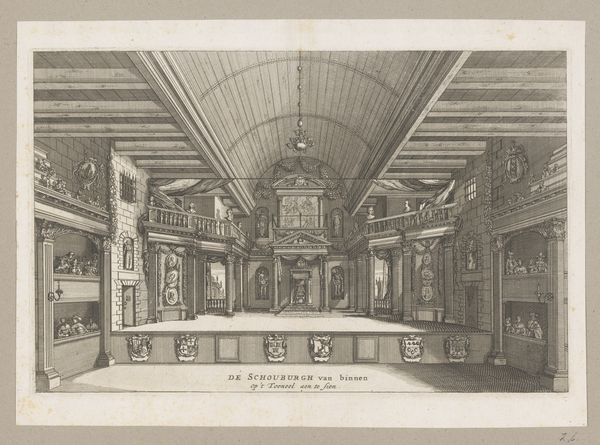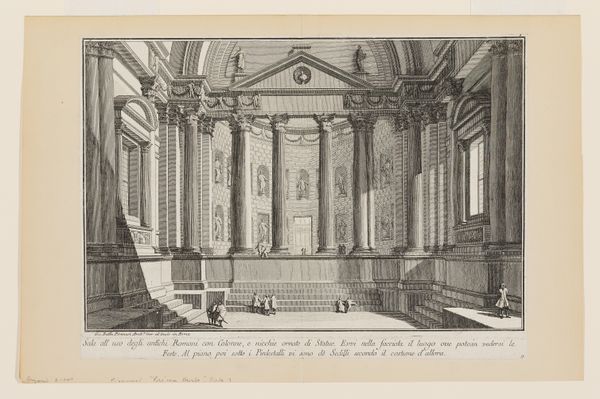
Spisesalen i Chr. VII's palæ på Amalienborg 1756 - 1770
0:00
0:00
Dimensions: 150 mm (height) x 226 mm (width) (bladmaal)
Curator: This engraving by Johannes Gottfred Bradt, dating back to between 1756 and 1770, depicts the dining hall in Christian VII's palace at Amalienborg. What are your immediate thoughts? Editor: The first thing that strikes me is the sheer abundance. The detailing is so intricate; from the patterned floors to the ornate ceiling. It all speaks to power and immense wealth. Curator: Absolutely, it's a testament to the Baroque style, projecting authority and grandeur through its meticulous craftsmanship. Consider how spaces like these were curated and what roles they fulfilled within a Royal court setting. Editor: When thinking about its making, the engraving itself, what materials did Bradt utilize, and what labor practices facilitated their assembly and application here? The materials symbolize a hierarchy, both physically and socially constructed through artisanal and artistic choices. Curator: It is worth noting that architectural renderings were produced as documents for various purposes in this historical moment, often circulated for political, social and promotional reasons across European centers of power. Spaces like these are stages where cultural rituals take place, asserting a specific notion of aristocratic authority tied to a lineage, an understanding of power as inextricably woven together. Editor: It raises questions of accessibility. The sheer material wealth stands in stark contrast to the lives of common people. It represents a significant accumulation of social product channeled into this exclusive space and this exact kind of visual depiction as further affirmation. Curator: These lavish spaces helped to cultivate ideas surrounding monarchy but at the same time they become sites that, as many theorists like Foucault show, produced complex effects that extend beyond the spaces proper into the everyday lives of the citizens. Editor: Considering this tension, what contemporary resonances might the space and image evoke in viewers today given modern expectations around access to wealth? I agree it creates a symbolic framework of domination, now captured via reproduction as print and available for popular consumption, however altered or estranged from lived experience. Curator: It's a powerful reminder that art and architecture don't exist in a vacuum, and of its significance. Bradt captured this intersection of craft, power, and political agenda. Editor: And the complex processes that make that possible in his precise labor-intensive engravings. A fascinating piece overall that prompts so many questions about societal norms.
Comments
No comments
Be the first to comment and join the conversation on the ultimate creative platform.

